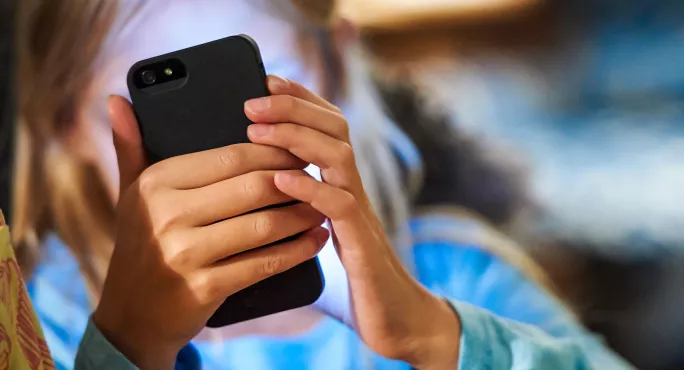
3 essentials for schools giving digital devices to pupils

The inexorable creep of screens into almost all aspects of our lives accelerated during the pandemic, and for obvious reasons. The lockdowns highlighted the need to address digital inequality and ensure equal access to all for online learning.
One of the solutions to this has been to give all children one-to-one devices, pupils in some parts of Scotland receiving iPads en masse, and the Scottish government making an (as yet unrealised) commitment to provide every pupil in the country with a free laptop or device.
This is, of course, well-intentioned, but we would do well to consider whether, in post-pandemic education, the ubiquity of digital technology will be an unambiguous win for students.
iPads and other such devices open a world of opportunity in education: easy communication, apps that gamify learning, clear organisation of resources - all of these are boons for teachers and students alike.
Yet, as the Canadian philosopher Marshall McLuhan cautioned in the 20th century, we must not only focus on what a piece of technology extends, but also what it amputates when it is over-extended. In managing these devices well, educators must become aware of those pernicious ways in which digital technology can degrade attention, dismember community, and debase human experience; as the adage goes, power without wisdom is tyranny.
- Context: What progress has really been made on laptops for all pupils in Scotland?
- Long read: Can tablets transform education in Scotland?
- Opinion: Why teachers should be wary of tech’s ‘seductive power’
So how do we navigate the perils of this while trying to lay hold of the educational advantages devices offer? The answer is to have school leaders who have a wise policy on device use, one which has been influenced by current research on the way screens impact our lives.
A thoughtful and robust whole-school approach will require an informed approach to educating, managing and setting up devices, each of which are discussed below.
1. Keep an eye on the bigger picture
While all schools will all deliver a degree of teaching about online safety, this does not always go beyond the statutory guidance on extremism and staying safe online. However, an approach to using devices needs to go beyond a series of dos and don’ts, with more focus on the bigger picture of how screens shape and direct our attention through persuasive design and attention-grabbing algorithms.
From the Netflix documentary The Social Dilemma to Anna Lembke’s book Dopamine Nation, there is a chorus of people who are trying to raise awareness about the damage and dangers of screen use (and screen addiction), especially on the teenage mind. Insights on attention, addiction, misinformation and persuasion should all be part of the way we educate staff, pupils and their parents.
2. Make expectations clear
There need to be clear and strict guidelines on how screens are to be used in school, and how they are expected to be used at home. These rules should be a logical outworking of point one above; articulate what a healthy relationship with screens does and does not look like, then embody it through the rules and expectations.
Share these expectations with home - mischief thrives in ambiguity. Being strict about devices and how they are used in and out of school is kinder to everyone, and develops the kind of habits that help pupils divert their attention from screens.
3. Be discerning about how devices are to be configured
If it’s true that pop-ups and dings degrade attention (it is), then turn them off. If that dopamine hit you get from likes on Facebook is addictive (again - it is), then get rid of it, and maybe block certain social media channels while you’re at it. The Center for Humane Technology is a helpful resource for highlighting the way screens are designed to manipulate you, and crucially, how to disempower your devices through changing default settings.
I liken this kind of approach to Homer’s Odysseus having himself bound to the mast so that he wouldn’t follow the Siren’s Song. Odysseus knew what was coming, and that he would be too weak to resist the lure of the Sirens - this is why he had himself bound to the mast. Paradoxically, it was only because of this binding that Odysseus could secure his freedom.
For ourselves and those in our care, we need to do likewise to ensure that our devices serve them, rather than the other way around. This may seem naive, given that most students have smartphones in their pockets, and these are largely out of our purview. However, I would argue that this is all the more reason to educate students about healthier ways of relating to their devices, rather than admitting defeat.
Technology can be helpful and liberating, but only if we learn to master both it and ourselves. To do so will require awareness, guidance and the virtues of wisdom and self-control - all of which are in a school’s gift to develop.
Kenneth Primrose is the character development lead for a school in the North East of England and has also worked as a teacher in Scotland, where he was a head of philosophy and religion
You need a Tes subscription to read this article
Subscribe now to read this article and get other subscriber-only content:
- Unlimited access to all Tes magazine content
- Exclusive subscriber-only stories
- Award-winning email newsletters
- Unlimited access to all Tes magazine content
- Exclusive subscriber-only stories
- Award-winning email newsletters
You need a subscription to read this article
Subscribe now to read this article and get other subscriber-only content, including:
- Unlimited access to all Tes magazine content
- Exclusive subscriber-only stories
- Award-winning email newsletters
- Unlimited access to all Tes magazine content
- Exclusive subscriber-only stories
- Award-winning email newsletters



